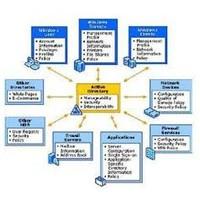Healthcare poses diverse logistic requirements, which resulted in the deployment of several distinctly designed robots within a hospital setting. Each robot comes with its overheads in the form of, namely, none/limited scaling, dedicated charging stations, programming interface, closed architecture, training requirements, etc. This paper reports on developing a reconfigurable logistic robot named WaspL. The design of WaspL caters to the requirement of high mobility, open robotic operating system architecture, multi-functionality, and evolvability features. It fulfills multiple logistics modes, like towing, lifting heavy payloads, forklifting low ground clearance objects, nesting of two WaspL} etc., fulfilling different applications required in hospital settings. The design requirements, mechanical layout, and system architecture are discussed in detail. The finite element modeling, attribute-based comparison with other standard robots, are presented along with experimental results supporting the WaspL design capabilities.
翻译:保健提出了不同的后勤要求,导致在医院布置了几个专门设计的机器人,每个机器人都以无/有限缩放、专用充电站、编程接口、封闭建筑、培训要求等形式出现间接费用。本文详细讨论了开发一个叫WaspL的可重新配置的后勤机器人。WaspL的设计符合高度机动性、开放机器人操作系统结构、多功能和可变性等要求。它具有多种后勤模式,如牵引、提升重型有效载荷、推动低地清理物体、筑巢两个WaspL等。详细讨论了设计要求、机械布局和系统结构。介绍了有限要素模型、与其他标准机器人的属性比较以及支持WaspL设计能力的实验结果。




